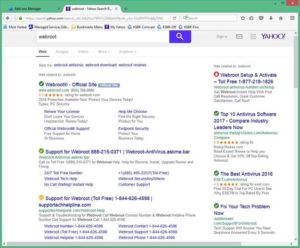The Company: RTA Transit Services, Inc., a private company operating on behalf of the Worcester Regional Transit Authority
The Worcester Regional Transit Authority (WRTA) service area includes over half a million in population and is the second-largest regional transit authority in Massachusetts, serving 35 communities. WRTA maintains a fleet of 47 buses including four clean diesel-electric hybrid buses for 23 fixed routes in Worcester and 10 surrounding communities. WRTA also provides para-transit and special services for elderly and disabled passengers. The organization is a state-run agency, and as mandated by federal law, is operated by a private company—RTA Transit Services, Inc.
The Challenge: Build a Stable, Redundant and Scalable IT Infrastructure
To help manage WRTA daily operations, RTA Transit Services previously relied on a variety of software solutions that each functioned on separate hardware system in the data center—with each software vendor specifying its own needs. To address the issue, RTA and its previous IT solution provider deployed virtual machines to handle the application load. But the architecture did not account for future growth, and the two host virtual servers operated independently. A hardware failure on either one would have taken down half the operation.
“We wanted to transform our data center into a more robust platform that could scale easily and adapt to new technologies as our needs change over time,” said John Carney, RTA Transit Systems General Manager. “We also wanted to add a high level of redundancy since it’s critical that we maintain service to our customers in the event of a system failure or a power problem at one of our operation centers.”
At the time that RTA Transit Services considered these changes, the IT team also planned to deploy a new intelligent transit system from Clever Devices that helps manage bus maintenance and provides bus-schedule updates to customers via the Internet and digital signs at stations. In addition to ensuring Clever Devices would run properly, RTA also needed to migrate all of its operational software systems to the new platform.
This included CyberAudit by Videx for security; a PTM Brokerage Services system that interfaces with an SCM Elderbus system for handling transportation services for handicap passengers and requires virtual-private-network connections; and a HASTUS group-scheduling and planning solution from GIRO that helps with bus scheduling and operations.
“Finding a new technology partner with the expertise to help us build a platform that could handle all of these systems was critical since the level of service we received from our previous IT support vendor had reached its limit,” Carney said. “We also wanted to partner with a solutions provider that could work within our budget but still design and deploy an effective solution.”
The Solution: A Virtual Server Data Center Designed by Bryley Systems
RTA Transit Services appointed a committee to search for an IT solutions provider and considered multiple firms. Bryley Systems won the project based on its ability to offer a team with a wide breadth of experience across all the different technologies involved in the project. “Bryley also has the ability to provide remote support and fix problems behind the scenes, which is important for us going forward,” Carney said. “When we submit a request, Bryley assigns an appropriate-level resource with the right expertise to address the issue.”
Bryley first assessed the overall server infrastructure at WRTA and designed a new platform that could run all of the various software applications effectively and scale as needs emerge. Bryley also documented the components that required upgrades and provided a blueprint for how to add computing resources in the future.
“Bryley developed a comprehensive plan and recommended clear steps to advance to where we wanted to be,” Carney said. “They then broke it down for us into components to help us determine what we could reasonably do so within our budget.”
Because of the complexity, the WRTA hired a consultant to assist its internal resources with the project. The consultant’s recommendations confirmed the need to deploy the infrastructure that Bryley recommended. “The consultant’s viewpoint confirmed that Bryley had the expertise we would require over the long term and gave us confidence that the project would be handled effectively,” Carney said.
The Deployment: Project Moves Forward Even When Unplanned Roadblocks Occur
Based on the value of the Bryley assessment and design as well as the consultant’s recommendation, RTA then asked Bryley to deploy the new data center infrastructure. Bryley deployed a VMware-based virtual server environment with a P4500 series storage area network from HP. The design also included five HP DL360 servers running Microsoft Windows Server operating systems, and high-end Cisco firewall equipment. In addition, Bryley created a dual-location disaster recovery solution with completely-redundant systems and full failover capabilities between the WRTA operations and call-center locations.
As part of the project plan, Bryley assembled the virtual server rack and shipped it to Clever Devices in New York where Bryley experts worked side-by-side with the Clever Devices team to configure the servers. Clever Devices then installed their solution on the servers, which were then shipped back to WRTA.
When the rack arrived back at WRTA, it had sustained minor damage during the shipping process, and the ramps that allow the racks to be rolled into place were missing. But Bryley adjusted quickly and was able to move the rack into place without the ramps. Bryley also assessed the damage to help WRTA with the insurance claim.
“Bryley reacts to changes like this very well and can address project-schedule adjustments caused by circumstances outside of their control,” Carney said. “They helped keep the project moving forward and demonstrated solid project management skills in addition to their technical capabilities.”
Bryley also evaluated the connectivity circuits between the operations and call-center sites and established a virtual-private-network connection between the two buildings that can be accessed by key vendors such as Clever Devices and Elderbus. Bryley then updated the system security with a Cisco ASA appliance and set up 10 desktops from which RTA personnel manage the Clever Devices software.
The Benefits: New Infrastructure Platform Enables Improved Customer Service
WRTA now has 21 virtual Windows servers running on five physical servers at its Grove Street location and three physical servers at the Main Street location. The agency also now has a stable platform on which RTA can run the business as well as add on to in order to meet future needs. RTA will also continue to consult with Bryley when working with software vendors to ensure any new solutions are deployed correctly within the new infrastructure
“Bryley helped us greatly in organizing and stabilizing the environment,” Carney said. “They know how to utilize hardware effectively and prepare for the future by designing scalable systems. In addition to adding high-level redundancy, we also eliminated unnecessary hardware so that we have a data center that’s much easier to manage.”
The Clever Devices application, powered by the platform designed by Bryley, allows bus passengers to use smartphones to check on bus schedules. The software also processes next-stop announcements on buses and next-arrival announcements at stops. In addition, the application also counts passengers.
“With the new technology platform empowering Clever Devices, we are greatly enhancing the level of service we offer to our customers,” Carney said. “By using smartphones, the Web or viewing digital signs, passengers can now see the status of any bus at any moment. This not only helps customers avoid missing buses that are ahead of schedule but also eliminates the frustration of arriving too early for a bus that is running late.”
RTA also plans to rely on the Clever Devices solution to replace its radio system with a VoIP solution. The complexity of this project generated a lot of logistical challenges for which Bryley provided its expertise. “We were not sure if we should replace our radio system with a Verizon VoIP system,” Carney said. “But Bryley met with us and Verizon to help us understand how the solution works and confirm VoIP was the way to go.”
The server infrastructure that Bryley designed and deployed is now the backbone that keeps all IT systems running at WRTA. The overall system also helps improve services to disabled people since RTA has backup systems for monitoring customers that might need rides to medical care appointments. RTA can also move the phone system to a new location if it there’s a problem at the main phone center.
“Bryley has turned out to be the perfect IT partner for us,” Carney added. “They first helped us develop a plan for future technology investments that we can consider as our budget allows. They then built an IT infrastructure platform that supports technologies that allow us to improve the services we offer to customers and ensures we have sufficient redundancy in place should any of our systems experience a failure.”
Major Benefits—WRTA Technology Platform Designed and Deployed by Bryley:
- Stability: Enables applications that run the business to perform consistently
- Sustainability: Supports future enhancements as business requirements change
- Redundancy: If main location goes down, system automatically fails over to backup site
- Improved Customer Service: Supports applications that enable efficient phone, texting and Web services to provide passengers with immediate access to bus information
For more information on how Bryley can assist your organization with IT goals, please contact us at 978.562.6077, or email us at ITExperts@Bryley.com.











